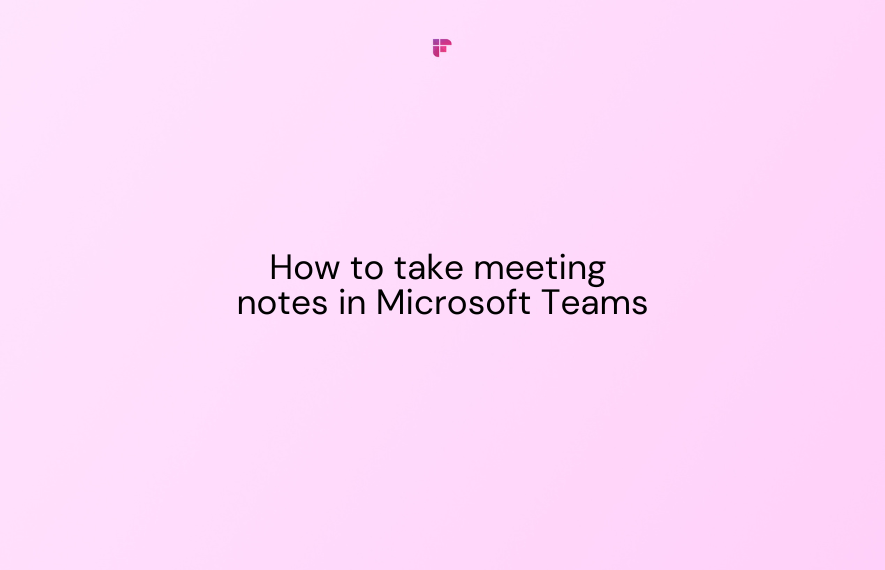There’s no bigger pretentious badge of honor than saying you have a schedule packed with back-to-back business meetings.
While most of these meetings are necessary, some can be avoided or turned into an email thread.
That said, meetings are an important part of our lives, especially those in the corporate world. It is a necessary idea, problem-solving, and decision-making arena for every team. But running an effective one remains a challenge to many.
But how do you decide which meetings are necessary and which ones are just plain time-wasters?
In this blog, we’ll delve deeper into the best tips for running effective and successful meetings. But before that, let’s first define them.
Characteristics of a Good Meeting
Attendees know the agenda
A common issue many face with meetings is that discussions don’t stay on track. Sometimes, meetings take too long of a detour before returning to the topic. For meetings to be effective, it's better to inform all participants about the agenda and stick to it.
Attendees are well-prepared for the meeting
Sometimes, even with a detailed agenda, meetings can be inefficient if your attendees aren’t prepared. It’s not uncommon for people to talk in circles and not value-add to the meeting as a whole.
For meetings to be efficient, attendees need to come prepared, go straight to the point, and be succinct when it’s their turn to speak.
Clear action items
Imagine attending a two-hour meeting where people bounce ideas off each other with much enthusuasm. Good, right? But then nothing gets done after that.
Why? Because the action items were not clear.
Meetings are only successful if the action items are crystal clear for each meeting participant. Who gets to do what and when is the deadline for the tasks? Things will get done faster and better when your teammates know what's expected of them.
Tips on Running Efficient and Successful Meetings
Use software to automate the scheduling process
Before getting into the nitty-gritty of running an effective meeting, let’s first discuss the process that comes before that.
Far too often have I received a meeting invite email only to reject it immediately due to a scheduling conflict. And far too often has this been followed up by unnecessary back-and-forth emails or Slack messages just to decide the best meeting time for all.
Appointment scheduling tools like Timesync and Calendly allow all participants to integrate their work calendars with the tool. Meeting hosts can then provide time slots for participants to select based on their availability.
Just imagine the amount of time this would save.
Set a clear meeting agenda
Every meeting should have a purpose. Here are a few things every meeting agenda should contain:
- Goals and objectives. Set the record straight before the meeting starts. Every meeting attendee should know what you’re trying to accomplish. Is the meeting meant to generate ideas to improve communication between departments? Or is it meant to identify areas of improvement in the hiring process?
- Meeting structure. Decide the duration of the meeting, who will speak at the meeting, and how long each speaker will present. It is also important to have time for breaks and Q&As.

Make sure that the agenda is clearly communicated to all meeting attendees so that they can prepare their discussion points in advance.

Collect discussion points from attendees
To avoid the problem of participants talking in circles, it’s a good practice to collect summary points from those who need to speak at the meeting.
Ideally, collect these about three to four days before the meeting day to provide some buffer time for participants to make any necessary changes.
Doing this can significantly cut down on the fluff brought up during meetings. Every person will get their turn to speak and your meeting will not go over the allotted time.
Assign a timekeeper
Sometimes, even with a clearly defined agenda and discussion points, people may still get carried away.
Assigning a timekeeper helps you track how long each person has been speaking. The timekeeper should also be the one who will remind the presenter that she needs to wrap up her presentation to make way for others.
This helps keep meetings efficient and prevents participants from unnecessarily talking past their allocated time.
Send meeting reminders
While it may seem a matter of common sense that people should block their calendars for important events, it’s better not to assume so.
This shouldn’t be an issue if you’re already using appointment scheduling tools. Many of these tools come with automated email or text message reminders that an appointment or call is coming up.
But if you’re not, do set a reminder for yourself to remind others to show up for the meeting. Ideally, this should be sent out one to two days before the scheduled meeting date. You wouldn’t want last-minute no-shows for no good reason.
Take good meeting minutes
It's good practice to always assign somebody to take down meeting minutes to keep track of all the key discussion points.
If you’re running virtual or hybrid meetings, it's best to automate the note-taking process with a meeting recording and transcription software like Fireflies.
It automates minute taking, lets you focus on what’s being said, eliminates miscommunication, and makes the entire process so much more efficient.
Send a meeting recap to attendees
Prepare a summary of what was discussed during the meeting once you have the meeting minutes or transcription on hand.
If you prefer not to do that manually, Fireflies automatically creates and sends the meeting recap to attendees a few minutes after the meeting. This will help you save time and let you annotate the transcription for effective follow-ups.

You can flag the action items mentioned in the call, and then send it to the respective task assignees. You can even have a discussion within Fireflies Thread section with your teammates to clear up any misunderstandings about the action items.
This not only helps keep track of who’s doing what but also helps to hold the task assignees accountable for the work they need to do after the meeting is over.
Set the Date and Time for the Next Meeting
While preparing for this meeting, you should already plan for the succeeding ones—but only if they are necessary.

When thinking of the date for the next meeting, consider the amount of time needed to complete some of the follow-up tasks. Subsequent meetings should also allocate a small amount of time for brief updates on their progress.
Final Thoughts
And there you have it!
These are our eight best tips on how you can run successful and effective meetings. I hope that these will help eliminate quite an amount of time-wasting activities to make your meetings more efficient.
This is a guest post by Nigel Seah







